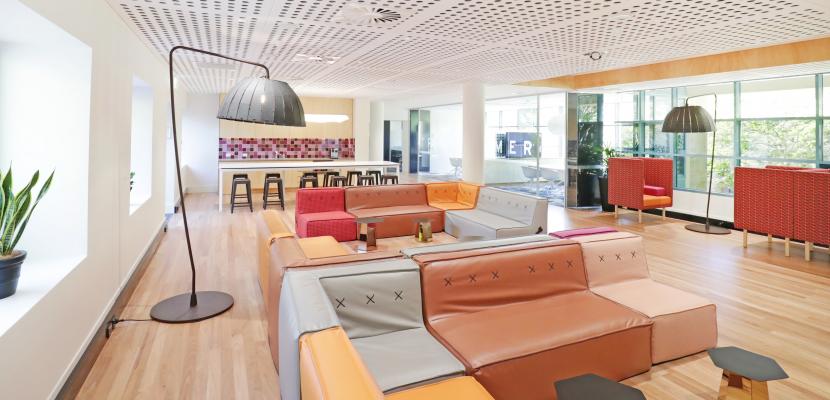
Organisations are heavily investing in designing 'beautiful' spaces to boost innovation and maximise collaboration, as the office becomes more important than ever in today's tech-driven economy, says Bond Business School workplace expert Libby Sander.
Ms Sander said despite predictions the office would become obsolete as a result of technological advancements, businesses were placing increasing emphasis on workplace design, with billions of dollars being poured annually into developing effective commercial spaces in Australia.
She said while technology, the rise of the contingent workforce and demand for innovation had forced workplaces to rapidly-adapt, face-to-face contact remained central to the economy.
“Research has found two-thirds of employees prefer to build relationships face-to-face and the majority prefer to do so in an ideal workplace,” said Ms Sander.
"Involvement by managers and employees in collaborative endeavours has increased by 50 per cent in the past two decades and collaboration is seen as a vital precursor to the production of creative ideas, problem solving and improved social capital, so creating opportunities for this is critical.
"Physical space acts like body language for an organisation, supporting thinking and creativity, with research showing subtle cues in our environment can cause us to be different versions of ourselves - more innovative or more outgoing, for example.
“As a result, creating an attractive workplace is essential not only to attracting and retaining staff, but inspiring them, encouraging them to work together and boosting their productivity."
Ms Sander, who worked in human resources for some of Australia's largest corporations before researching and advising on workplace design, said businesses needed to understand how the physical environment affected employees thoughts, feelings, behaviour and performance.
She said this was factored into the design of Bond University's latest learning space - a co-working hub, which has become the home of its recently-launched Transformer program, aimed at instilling 'big-picture' thinking in students across all faculties.
“The Transformer space is designed around the idea of ‘accelerated serendipity’ – bumping into someone who can help you develop an idea or work through a problem. It could be another student, an academic or industry mentor,” she said.
“The co-working hub ensures when these chance encounters occur, there is space nearby to support the task or discussion required. This could be a private quiet space, a coffee at the long bar table in the kitchen or sketching up ideas on a whiteboard wall in the lounge area.
“Without fit-for-purpose zones and spaces to support these needs, research shows essential conversations do not occur and the opportunity is lost.”
Ms Sander said the co-working space also provided students with an understanding of how future workplace environments should operate.
“Organisations need employees to work in an agile way, collaborate across boundaries and contribute to innovative outcomes," she said.
“It is vital that universities ensure students are also prepared for this. The design of physical spaces that allow students to become familiar with this way of thinking and working is an essential part of the preparation.”
Ms Sander said, across the board, workplaces needed to make people both physically and psychologically comfortable.
"Workplace design is increasingly incorporating domestic elements to support activities in different areas and make people feel at ease," she said.
“This might include high-spec kitchens, cafe areas, lounge spaces and the use of domestic or natural materials such as timber and slate, while the addition of warm colours can support creativity.”
Ms Sander said there were several elements a successful corporate office should include.
“The workplace must allow individuals to focus and concentrate. Acoustics and privacy are important, as these are areas that employees complain about when companies do not get it right,” she said.
“Research has shown that our workspaces need to be beautiful. Beautiful spaces improve our mood and make us more tolerant and expansive in our thinking.
“They also need to allow us to connect when we choose to. Forcing people to collaborate all the time is counter-productive and actually makes them more hostile and withdrawn.
“The use of plants is another key trend that aligns with our need for natural environments to reduce stress and promote more openness in thinking and ideas. Recent research found employees were 15 per cent more productive, could concentrate better and were more satisfied when greenery was added to the workplace.
"Finally, the space should be made flexible by using furniture that can be reconfigured for different needs and activities.”

